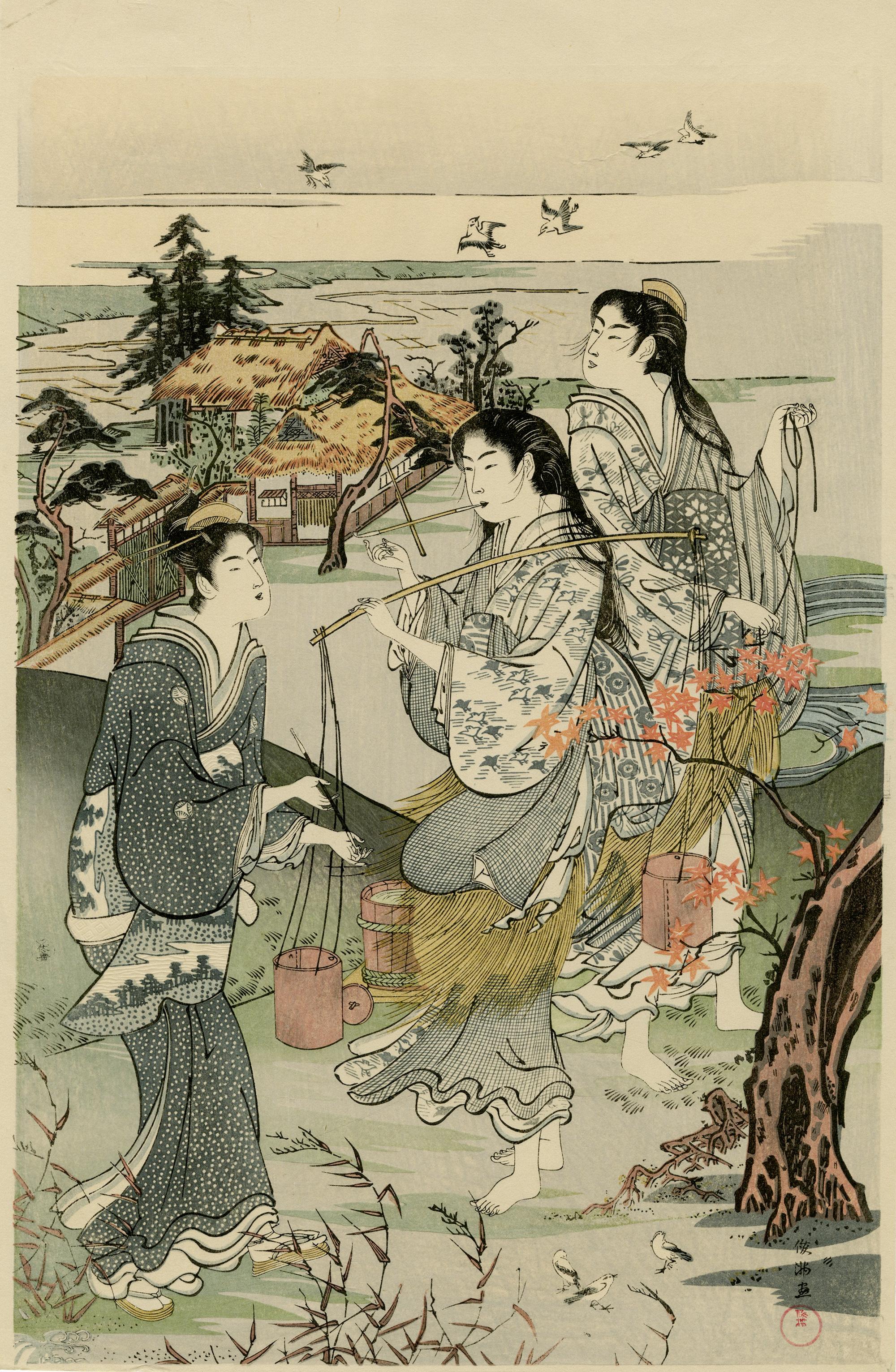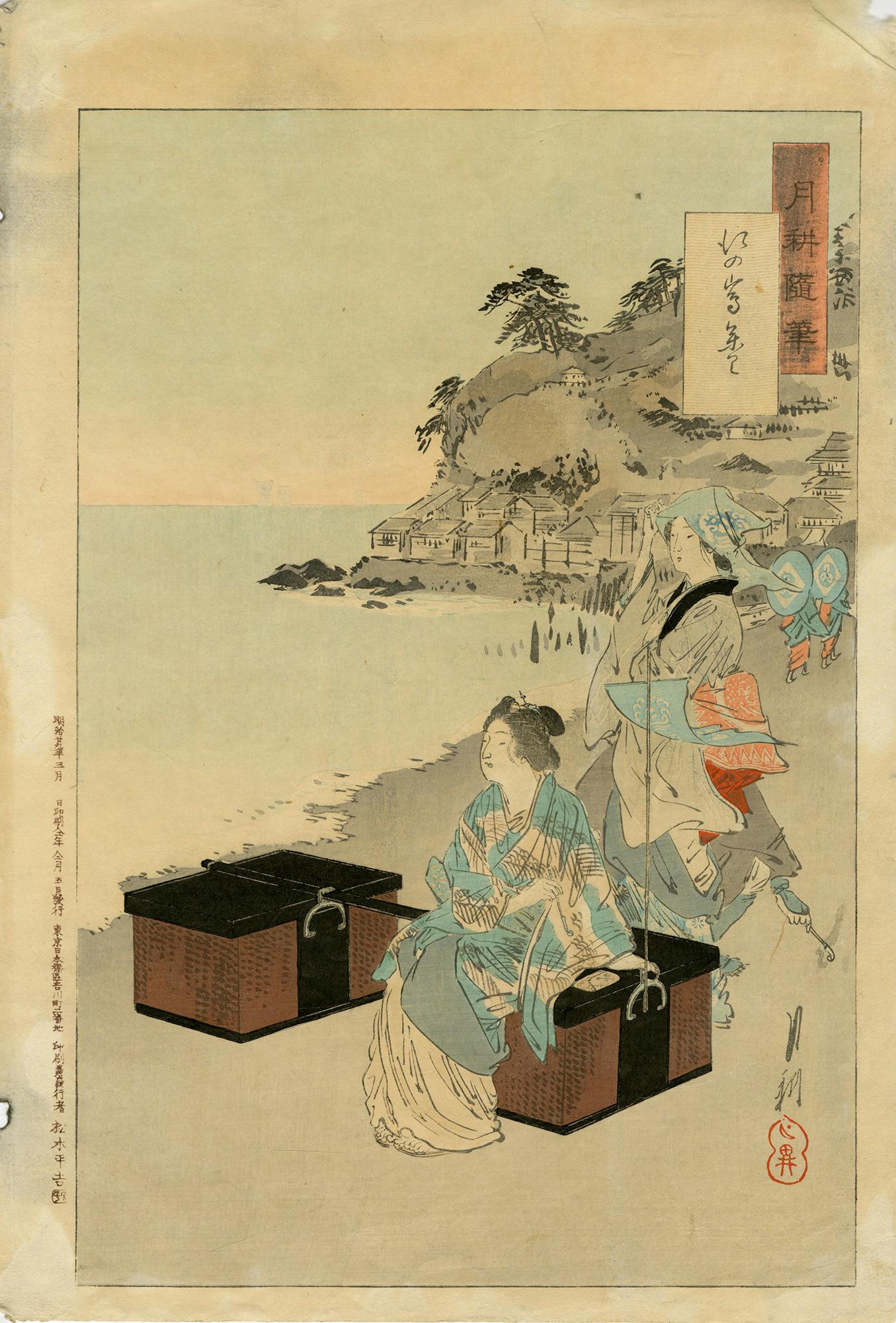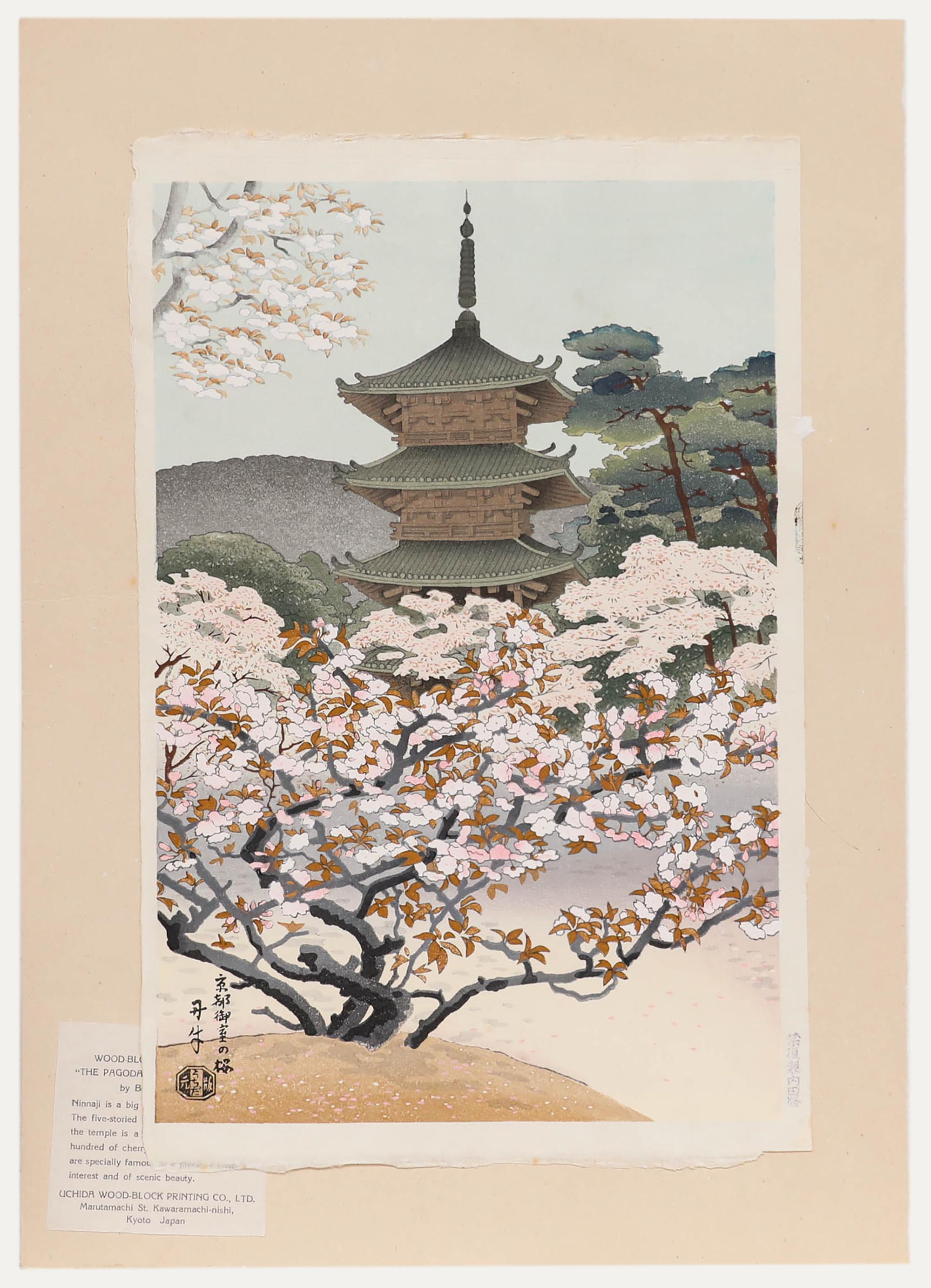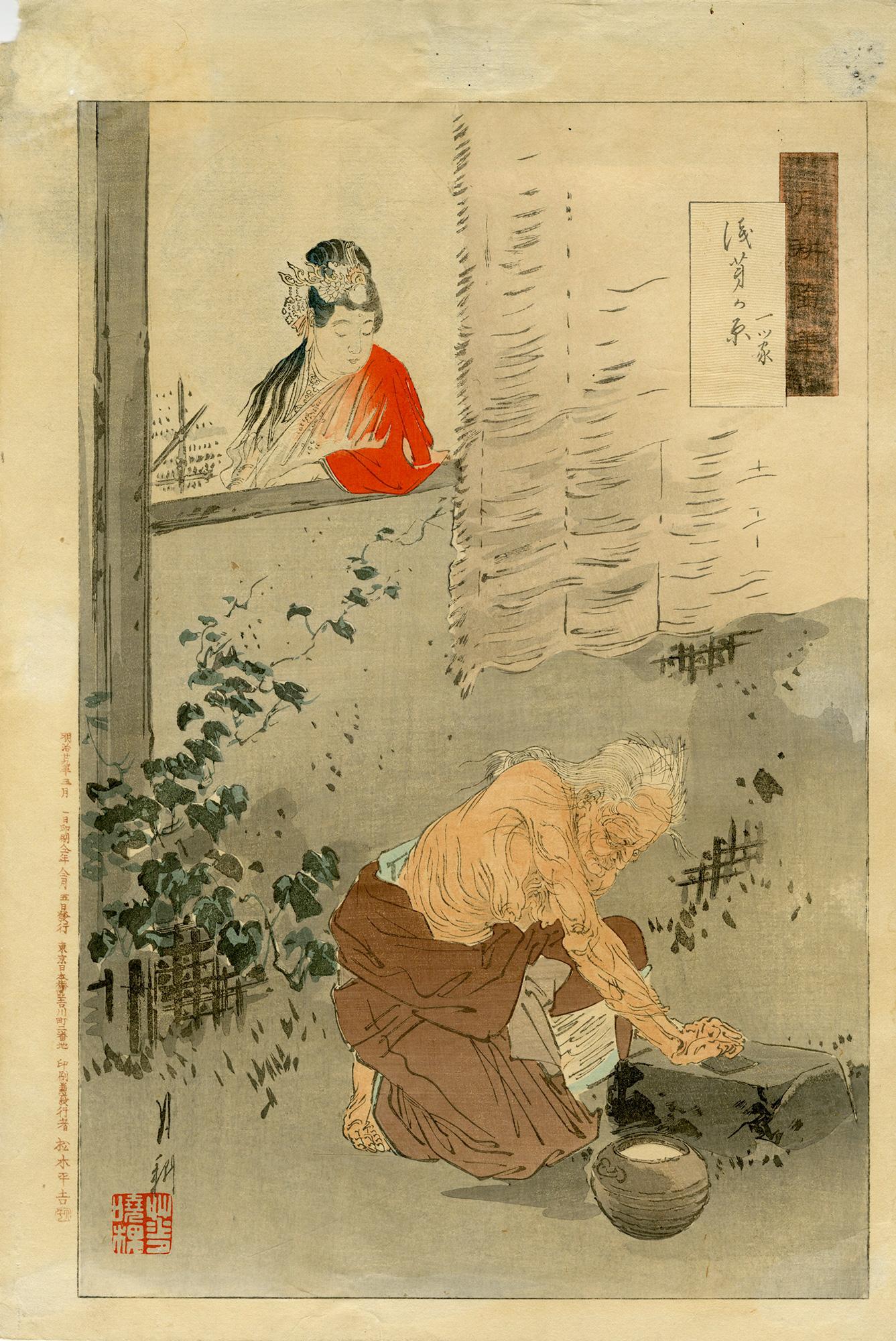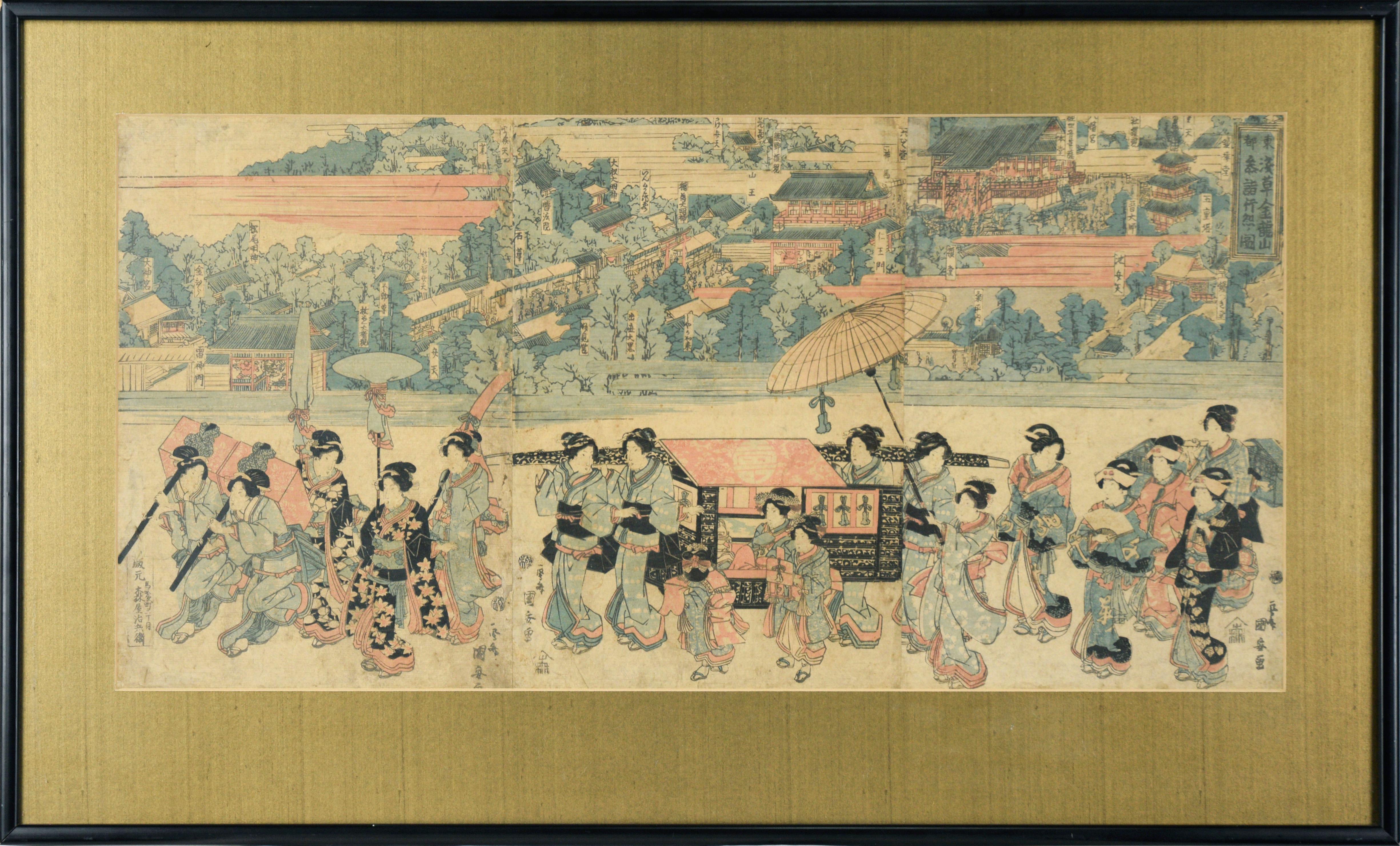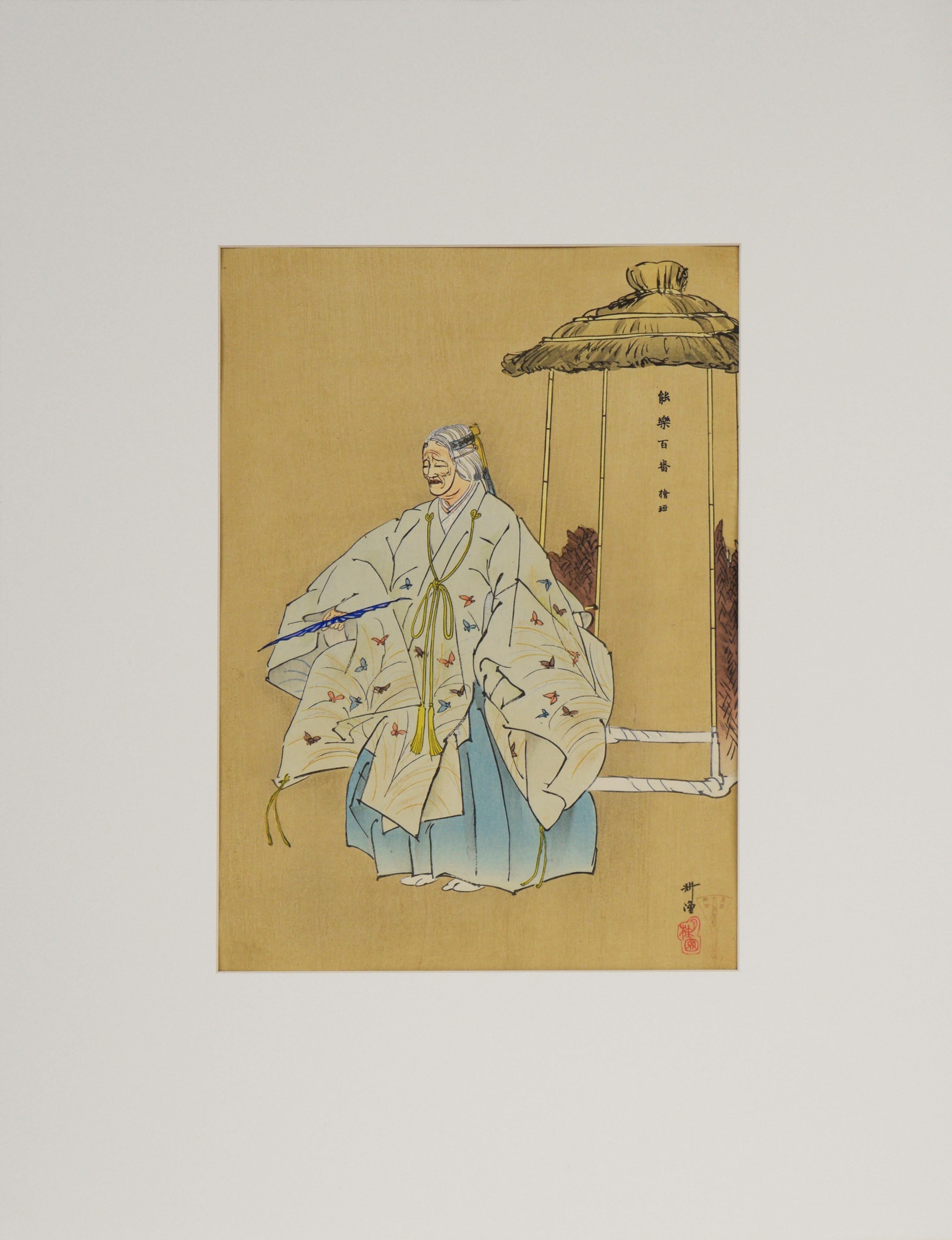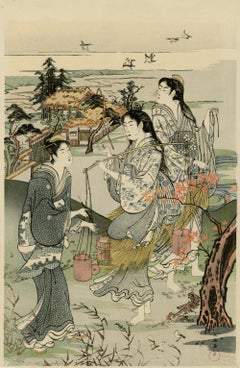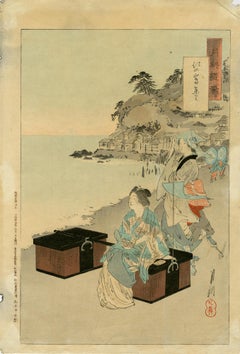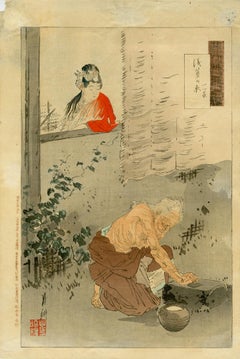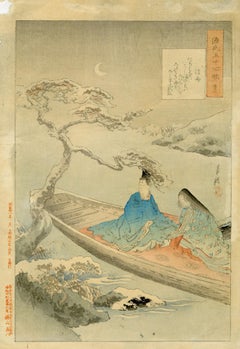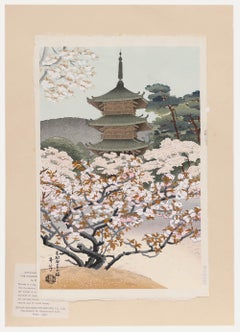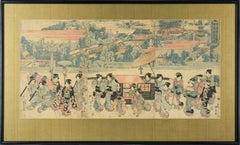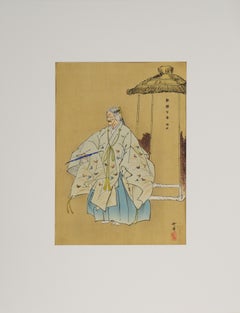Items Similar to Toshogu Shrine
Want more images or videos?
Request additional images or videos from the seller
1 of 3
Ogata GekkoToshogu Shrine1891
1891
$600
£465.05
€526.54
CA$858.85
A$936.50
CHF 486.74
MX$11,211.11
NOK 6,173.86
SEK 5,782.97
DKK 3,932.59
About the Item
In image of the Tokugawa family paying homage to Tosho-gu Shrine in Nikko.
Tokyo: Matsuki Heikichi, 1896
Woodcut in ink with embossing and hand-coloring in watercolor on handmade mulberry paper, 14 1/2 x 9 7/8 inches (368 x 251 mm), ōban tate-e, the full sheet. Scattered handling wear, some spots of adhesive residue on the verso and a small edge tear along the left-center sheet edge, extending approximately 1/2-inch into the image. Meiji period (1868 – 1912), from the series of essays and images called Sketches by Gekkō (Gekkō zuihitsu).
Ogaka Gekkō (originally known as Nakagami Masanosuke) was a self-trained artist who was orphaned at a young age and survived by illustrating brochures, selling drawings, and designing rickshaws. While the likes of Kitagawa Utamaro, Hishikawa Moronobu, Keisei Eisen, and Suzuki Harunobu were regarded as the innovators and masters of the bijin-ga form, Gekkō was one of the first Japanese woodblock print designers to achieve international recognition during his lifetime.
– Parkstone International, Looking Beyond the Portrait, November 5, 2015.
- Creator:Ogata Gekko
- Creation Year:1891
- Dimensions:Height: 14.5 in (36.83 cm)Width: 9.88 in (25.1 cm)
- Medium:
- Movement & Style:
- Period:
- Condition:
- Gallery Location:Middletown, NY
- Reference Number:Seller: BH11981stDibs: LU1979213771572
About the Seller
5.0
Vetted Professional Seller
Every seller passes strict standards for authenticity and reliability
Established in 2004
1stDibs seller since 2022
76 sales on 1stDibs
Typical response time: 7 hours
- ShippingRetrieving quote...Shipping from: Middletown, NY
- Return Policy
More From This Seller
View AllMu-Tamagawa
Located in Middletown, NY
Woodcut in ink with embossing and hand-coloring in watercolor on laid Japon paper, 16 x 10 inches (406 x 253 mm), ōban tate-e, full margins. Scattered handling wear and toning, other...
Category
Late 19th Century Edo Portrait Prints
Materials
Watercolor, Handmade Paper, Woodcut
Pilgrimage to Enoshima
Located in Middletown, NY
Tokyo: Matsuki Heikichi, 1893
Woodcut in ink with embossing and hand-coloring in watercolor on handmade mulberry paper, 14 1/2 x 9 7/8 inches (368 x 251 mm), ōban tate-e, full margi...
Category
Late 19th Century Edo Portrait Prints
Materials
Handmade Paper, Watercolor, Woodcut
The Lonely House at Asajigahara.
Located in Middletown, NY
A scene from a series of ghost stories and spooky rural legends.
Tokyo: Matsuki Heikichi, 1896.
Woodcut in ink with embossing and hand-coloring in watercolor on handmade mulberry pa...
Category
Late 19th Century Edo Figurative Prints
Materials
Watercolor, Handmade Paper, Woodcut
Courtiers under a wisteria draped pine tree
Located in Middletown, NY
Tokyo: Yokoyama Ryohachi, 1892
Woodcut in ink with embossing and hand-coloring in watercolor on handmade mulberry paper, 14 1/2 x 9 7/8 inches (368 x 251 mm), ōban tate-e, the full ...
Category
Late 19th Century Edo Portrait Prints
Materials
Watercolor, Handmade Paper, Woodcut
Dyeing Paper
Located in Middletown, NY
Japan: circa 1770.
Woodcut on cream laid paper, 7 1/4 x 2 1/2 inches (182 x 63 mm), narrow margins. Laid down to non-archival board with scattered soiling and some adhesive staining...
Category
Late 18th Century Edo Figurative Prints
Materials
Handmade Paper, Laid Paper, Woodcut
A Japanese Temple – English School, 18th century
Located in Middletown, NY
18th century image of a priest presiding over a traditional Japanese nuptual ceremony.
One plate from A new and complete collection of voyages and travels containing all that have b...
Category
Late 18th Century English School Interior Prints
Materials
Watercolor, Handmade Paper, Engraving
You May Also Like
After Benji Asada - Japanese Woodblock, The Gadoda of Ninnaji Temple
Located in Corsham, GB
A delightful Japanese woodblock depicting the pagoda of Ninnaji Temple situated in Western Kyoto, Japan. Ninnaji is a big temple of the Shingon Sect. The five-storey pagoda in the gr...
Category
21st Century and Contemporary Landscape Prints
Materials
Woodcut
The Pilgrimage Procession to Kinryuzan Temple at Asakusa in the Eastern Capital
By Kuniyasu
Located in Soquel, CA
Japanese Parade - Woodblock Print
Japanese woodblock print by Utagawa Kuniyasu (歌川 国安) (Japan, 1794–1832). Japanese women, dressed in blue and red kimonos, are the focal point. A vi...
Category
Mid-19th Century Edo Figurative Prints
Materials
Paper, Ink, Woodcut
One Hundred Prints Of The Noh - 1925 Original Japanese Woodblock Print
Located in Soquel, CA
One Hundred Prints Of The Noh - 1925 Original Japanese Woodblock Print
Original Japanese woodblock print by Tsukioka Kogyo (Japanese, 1869...
Category
1920s Edo Figurative Prints
Materials
Ink, Rice Paper, Woodcut
Japanese Woodblock - Street Scene
Located in Houston, TX
Lively Japanese woodblock print featuring street life. Ink on paper, circa 1860.
Original artwork on paper displayed on a white mat with a gold ...
Category
1860s Landscape Prints
Materials
Paper, Woodcut
The Temple - Woodcut Print After Mizuno Toshikata - Early 20th Century
By Mizuno Toshikata
Located in Roma, IT
The temple is an artwork realized by Mizuno Toshikata (1866-1908).
Woodcut print, early 20th Century.
33 x 43 cm with frame.
Good conditions
Category
1950s Modern Figurative Prints
Materials
Woodcut
"The Kaminarimon at the Kanseon Temple in Asakusa" - Original Japanese Print
Located in Soquel, CA
"The Kaminarimon at the Kanseon Temple in Asakusa" - Original Japanese Print
Japanese Print "The Kaminarimon at the Kanseon Temple in Asakusa", from the series "Famous Places in Ed...
Category
1850s Showa Figurative Prints
Materials
Rice Paper, Woodcut
More Ways To Browse
Antique Shrine
Francisco Mora
Francoise Gilot Signed
George Andreas
Gilot Signed
Henri de Toulouse-Lautrec On Sale
Henri Matisse Danseuse
Henry De Groux
Hogarth Etching
Iwo Jima
Jacques Jacob
Jean De Paleologue
Jim Dine Dorian
John Buckland Wright
Journal Des Demoiselles
Kathe Kollwitz Etchings
Kees van Dongen On Sale
Keith Haring Eye
